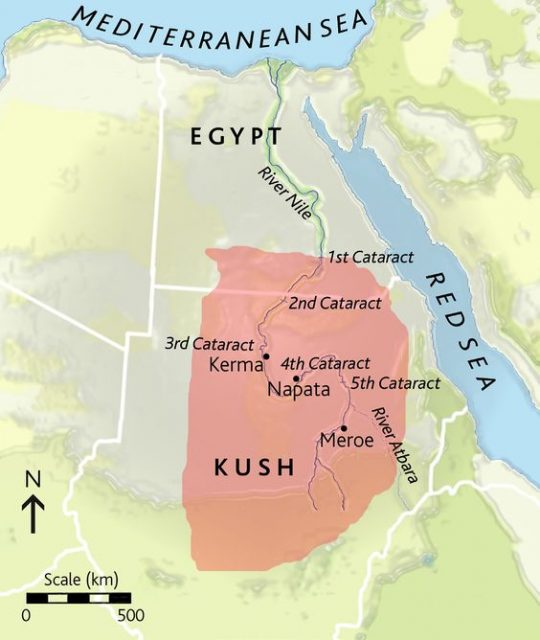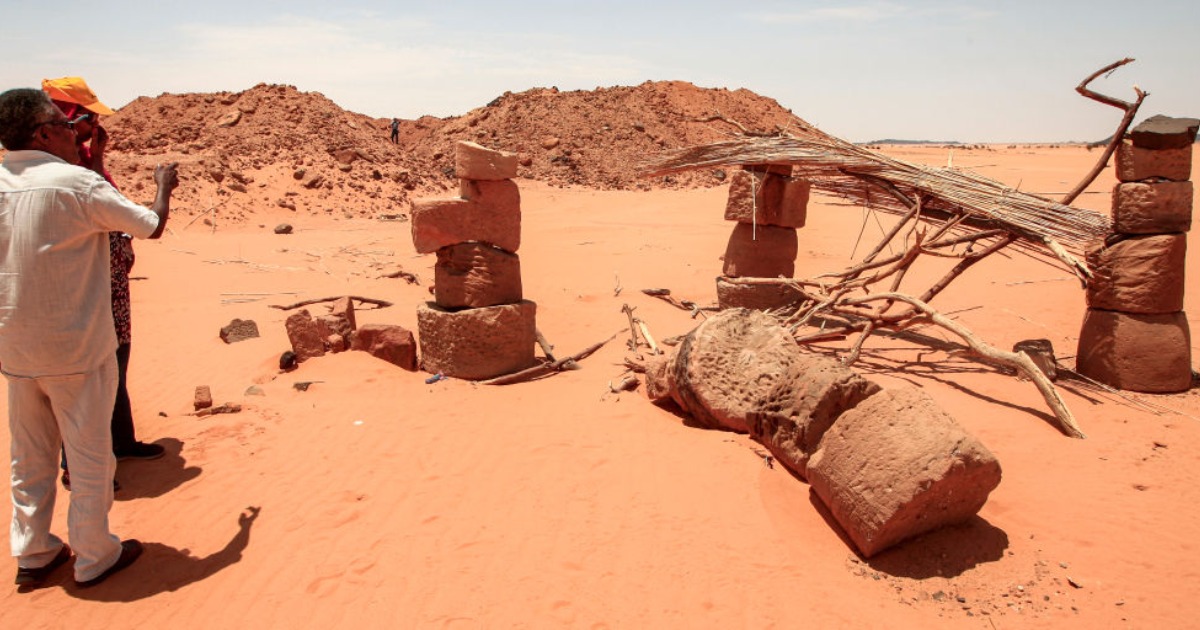Jabal Maragha, an archaeological site in the East Sahara Desert in Sudan, has been wrecked by gold diggers. Experts from Sudan’s Antiquities and Museums Department were horrified when they traveled to the 2,000 year old location last month, only to find the historic hub all but obliterated.
What they did see was far from wondrous – 5 men operating 2 digging machines, who’d managed to carve out a trench 65 feet long and 55 ft deep. Like many treasure seekers in the country, this reckless crew were in pursuit of gold. The precious metal tends to make people lose their sense of reason, certainly a factor in this case.
“They did something crazy;” says archaeologist Habab Idriss Ahmed to the Jakarta Post, “to save time, they used heavy machinery.” The wreckers probably picked up signs of metal in the sand. This would be pyrite which, together with sandstone, makes up the landscape’s layers.

The 21st century process was too much for Jabal Maragha, part of the Kingdom of Kush which existed during the Meroitic period (1070 BC – 350 AD). Smithsonian Magazine writes the site used to be “a small settlement or checkpoint”, which was there between 350 BC and 350 AD approx. Now it’s been destroyed the truth will probably never be known. Kush is something of a grey area anyway. Because the Kingdom tends to be lumped in with Ancient Egypt, information isn’t very advanced.

The Black History Month website mentions “the general assumption that the complex socio-political development of Egypt’s neighbours can be understood in terms of Egyptian models.” It adds that because of this, “the political structure and organization of Kush as an independent ancient state has not received as thorough attention from scholars, and there remains much ambiguity especially surrounding the earliest periods of the state.”

Similarities between Kush and the Land of the Pharaohs include the building of pyramids and the presence of certain gods, such as Ammon and Isis. Experts have established the Kingdom gained independence in approx 1070 BC, following the collapse of the New Kingdom of Egypt. It was based at Napata city – the town of Karima is situated there today.
While Jabal Maragha hasn’t been completely erased, the Post highlights that “hardly anything remains.” Adding insult to injury, the oblivious workers had “piled up ancient cylindrical stones on top of each other to prop up a roof for their dining room.”
Thankfully archaeologists venture into the desert with a police escort as standard, though it’s here the situation gets complicated. The men were taken to the station but later released without charge. Signs point to a system of corruption. Sudan is the third largest producer of gold in Africa, and mining is big business. The callous or unwitting destruction of Jabal Maragha is thought to have been arranged by wealthy individuals, or at least those who aim to become wealthy.
The Jakarta Post notes, “in hundreds of remote places ranging from cemeteries to temples, desperate diggers are hunting for anything to improve their daily lives.” It’s reported the young and jobless are urged by local authorities to search for gold. Perhaps ironically, the arrival of archaeologists carrying metal detectors in the late 1990s appears to have part-inspired the rush for all that glitters.
Incidents of Sudan’s history being aggressively exploited have long been on the increase. BBC News reports, “At Sai, a 12km-long river island in the Nile, hundreds of graves, some dating back to the times of the pharaohs, have been raided and destroyed by looters.”
Related Article: The Ancient Egyptian Religion Making a Comeback in the Modern World
Speaking to the Post, Director of Antiquities and Museums Hatem al-Nour states “Out of a thousand more or less well-known sites in Sudan, at least a hundred have been destroyed or damaged.” He adds, “There is one policeman for 30 sites… and he has no communication equipment or adequate means of transport.”
Another element is a clear lack of awareness about the importance of Sudan’s ancient world. It’s hoped educating the next generation will prevent them steaming in with shovels over the years to come…
Steve is a writer and comedian from the UK. He’s a contributor to both The Vintage News and The Hollywood News and has created content for many other websites. His short fiction has been published by Obverse Books.
